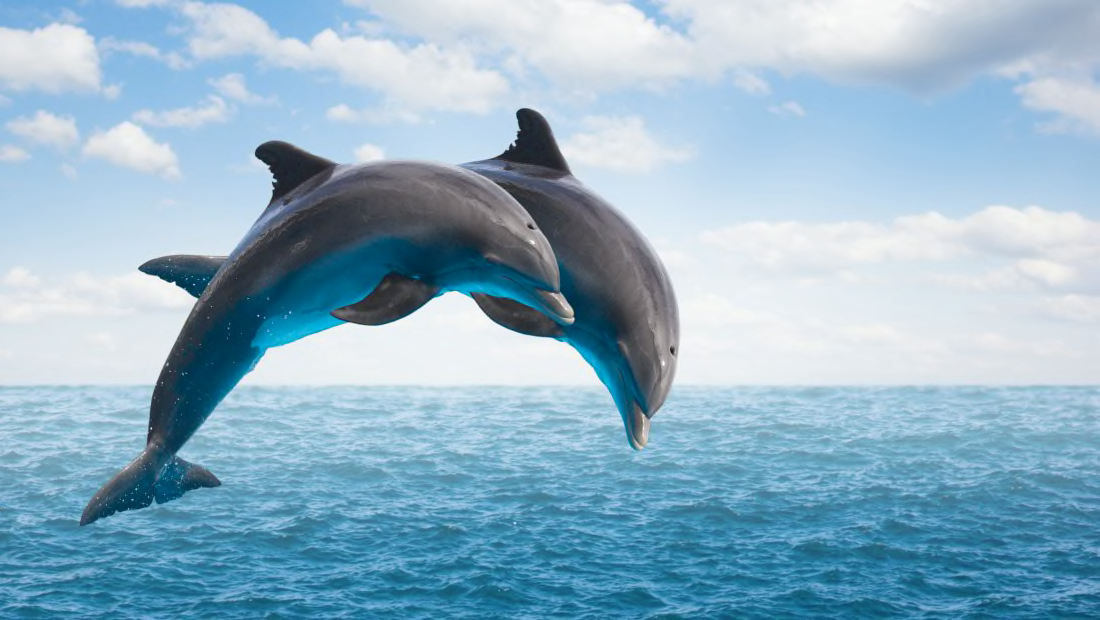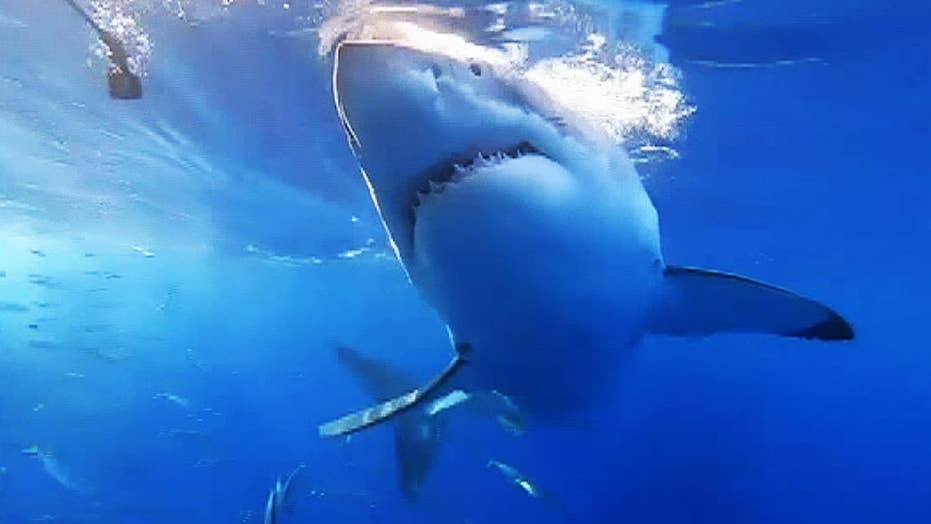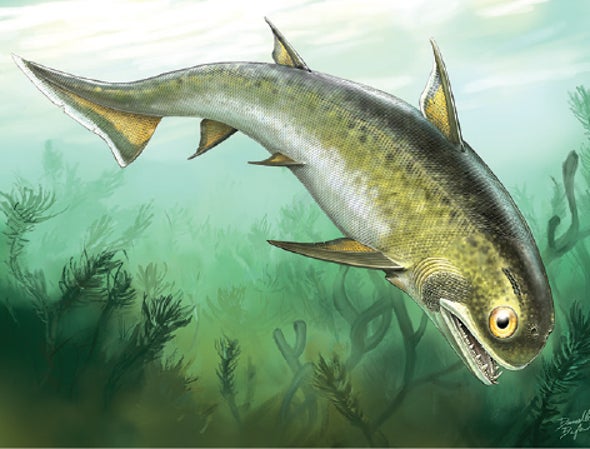

Anologous Trait: Both sharks and dolphins possess flippers and fins, which help them maneuver through the depths of the Earth. Fins are the most distinctive features of mammals. They are composed of bony spines that come from the body with skin covering them and joining them together, sometimes described to be in a webbed fashion, similar to a flipper as seen in sharks.
The reason these flippers and fins are an anologous trait, are because the ancestor of today's dolphin, did not start out by having a fin. The Mesonix was shaped more like a tiger or a lion, with arms and legs, until it evolved into a sea creature. However, the Mesonix's traits of having legs did serve the same purpose of the fins and flippers of sharks and dolphins, Just as flippers and fins were used to maneuver through water, the Mesonix's legs were used to maneuver through land. We know that these traits are analogous and not genetically related from common descent because of how differently the Mesonix and the Doliodus problematicus are structured. One has always been a sea creature, while the other adapted and evolved into becoming one.

My kingdom for a paragraph break! :-) Seriously, though, these are blogs but they should still be treated as papers, complete with correct formatting and breaking topics/prompts into separate paragraphs. It is very difficult to parse out where you address the different questions. Don't make it hard for me to grade your work.
ReplyDeleteHomologous: Interesting choice for your homologous trait, and a little tricky. Depending upon how you phrase this, this could be homologous or it could be analogous.
If you are talking just about the tail structure itself, it is homologous, with the structure traced back to the archaic fish that serves as the common ancestor to both the shark and the dolphin. You can trace the bony tail structure (though in sharks, it is cartilagenous) from that early fish to the modern day shark and also through amphibians, reptiles, and mammals, to the modern day dolphin.
But if you are talking about the specific *type* of tail (namely the "fluke" tail of both sharks and dolphins) then the trait is analogous. The trait was passed on from early fish to shark, but was lost on the pathway to mammals. It arose independently (and sideways) in the dolphin and other aquatic mammals after they broke off from land mammals.
So the question here is, which version were you talking about here? The basic bony tail structure? Or the fluke structure found in aquatic creatures?
Analogous: Good trait comparison. I would have preferred that you separate out your responses to the various prompts, as I had a hard time parsing out the different sections, but you described your species and provided the structural/functional information needed.
One point on ancestry:
"We know that these traits are analogous and not genetically related from common descent because of how differently the Mesonix and the Doliodus problematicus are structured. "
Remember that appearances can be deceiving. Genetic distance does not automatically mean traits are analogous. Your discussion on homologous traits earlier should confirm that. The reason we know these traits are analogous is because, as you explain we know these traits arose independently in the dolphin after it split off from the land mammals. You can't trace fins from fish straight to dolphin. The disappear and have to be re-evolved later on.
Good images, though one is labeled different from the identification in the post. It would have been good if you had captioned them to help your reader understand them (this is an option in Google).
I like the examples that you used for your post and how they all pieced together in the end. I think that the tails on the dolphin and the shark are an interesting feature to focus in on. The tails seem to be similar in shape but the sharks tale is turned side ways in comparison to the dolphins tail. I know that sharks need to constantly move in order to have air flowing through their gills so I wonder if their tail is "sideways" to allow for them to never stop moving. Maybe the dolphins tail allows for the dolphin to "hover" or be able to be still in water. Or maybe the dolphins tail allows for it to jump outside of water higher than others. This post definitely got me thinking!
ReplyDelete